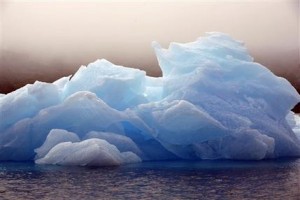The fourth nor’easter in three weeks is pounding the Northeast and the Mid-Atlantic with heavy snow, strong winds, and coastal flooding.
Since those who deny climate science, including President Trump, repeatedly say (or tweet) that extreme winter storms are evidence against human-caused global warming, let’s take another look at the science.
“While the unusually large number of nor’easters we are seeing this season may be tied in part to the unusual jet stream pattern favored by an emerging La Nina,” climatologist Michael Mann explained to ThinkProgress in an email, “the remarkable intensity of these storms, including the record strength ‘bomb cyclone’ in early January is tied to the unusual warmth of the Atlantic ocean, which is tied, in turn, to human-caused planetary warming.”
Nor’easters derive their name from the northeasterly wind direction driven by the counterclockwise air flow of these large-scale cyclones. In a recent article on the climate change link to powerful East Coast winter storms, Mann, director of Penn State’s Earth System Science Center, noted that they derive much of their strength from “the energy released when water evaporates from the (relatively warm) ocean surface into the atmosphere.”
The warmer the coastal water, the stronger the nor’easter.
This series of maps shows the remarkably high sea surface temperatures off the northeast coast that have been super-charging the recent storms.

As these charts show, the Gulf Stream has been running as much as 14.4°F (8°C) above the average. This is what boosts the storms’ intensity.
Accuweather noted before the latest nor’easter — which hit the nation’s capitol on March 21 — that “what is notable about this month’s trio of storms is how strong they’ve been,” adding that Chief Meteorologist Elliot Abrams “said the nor’easters gathered more strength because they remained out over the ocean for a longer period of time and had a chance to absorb more energy from the Gulf stream.”
This process of super-charged strengthening has been labeled “bombogenesis,” which is a why these warming-fueled storms have also been called “bomb cyclones.”
The many ways human-caused climate change fuels nor’easters
Human-caused global warming does much more than directly heat the waters that fuel these storms.
For instance, global warming also has worsened coastal flooding, since all of the extreme storm surges we’ve been experiencing in recent years ride on top of the nearly one foot of sea level rise that has occurred because of higher temperatures over the past century.
Indeed, the repeated storm surges and flooding from the recent spate of nor’easters have been so brutal in Massachusetts, that they’ve “raised questions among environmental organizations and the state about whether to keep rebuilding properties prone to such extreme weather damage,” WGBH reported Tuesday.
Additionally, a growing body of research connects the rapid warming in the Arctic to more extreme weather of all kinds, including East Coast winter storms.
Just last week, the journal Nature published, “Warm Arctic episodes linked with increased frequency of extreme winter weather in the United States.” This study found that as the Arctic heat ups, “the frequency of severe winter weather in mid-latitudes increases,” and that “this relationship is strongest in the eastern U.S.”
One key finding of the study was: “We also show that during mid-winter to late-winter of recent decades, when the Arctic warming trend is greatest and extends into the upper troposphere and lower stratosphere, severe winter weather—including both cold spells and heavy snows—became more frequent in the eastern United States.”
So, while President Trump has been tweeting for many years about how severe winter weather on the East Coast supposedly shows climate change isn’t real, the science says otherwise.


